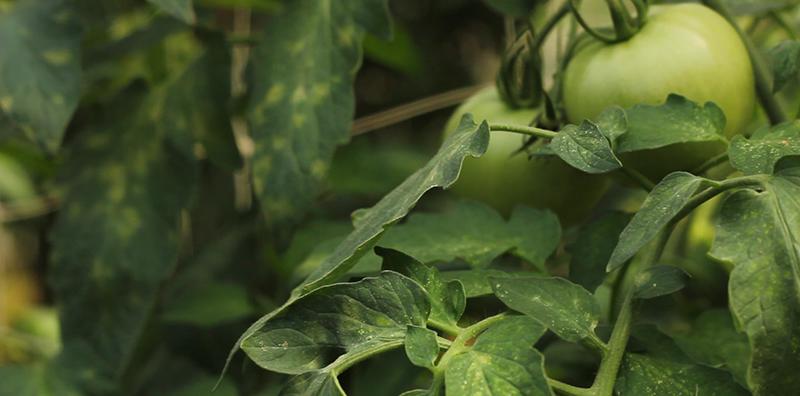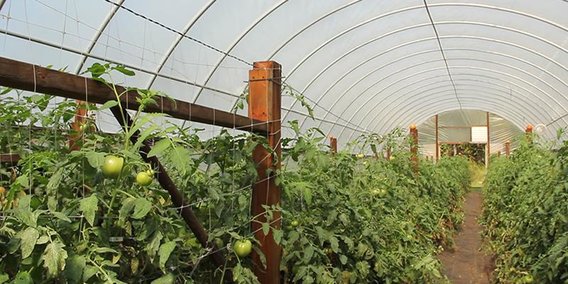Research Conducted by:
Lillian Garber, M.S. Student
Advisor: Angela Orshinsky
Informing What Is Grown in High Tunnels

The use of high tunnels in fruit, vegetable, and ornamental plant production can increase profitability by extending the length of the short Minnesota growing season, especially in high value crops such as tomato. Investment in high tunnel infrastructure and maintenance increases the cost of crop production in high tunnels for growers, and losses in yield and quality of tomatoes can reduce their value and impact the return on investment for growers. Helping growers protect high tunnel tomatoes in this growing environment is the research topic of Plant Pathology graduate student Lillian Garber. Garber’s research is building on previous research conducted at the University of Minnesota that identified the specific diseases faced by high tunnel growers. Diseases that are common and severe in high tunnels are different from diseases typical of field-grown tomatoes. One of the most prominent examples of this difference is the high incidence and severity of leaf mold disease on high tunnel tomatoes.
Garber is researching tomato leaf mold, a disease commonly associated with the fungus Passalora fulva, which causes defoliation of tomato plants in areas such as greenhouses and high tunnels because of the high levels of humidity that are found within these environments.
“High tunnels do a great job of trapping humidity. Since that is the kind of environment the pathogen favors, this is one of the factors that has allowed the disease to persist and spread within high tunnels in northern areas such as Minnesota,” says Garber.
One component of Garber’s research focuses on finding the most efficient and effective ways that growers can control the disease by creating a growing environment within high tunnels that is not desirable for the pathogen.
“Growers need to make sure that when they plant they are creating an environment that does not promote disease. At the same time our research also investigates how effective these environmental control methods truly are, so that growers can most efficiently use their time and money,” says Garber.
In order for growers to effectively implement these control measures, they must also be able to know precisely which specific type of leaf mold, otherwise known as the race, is present in Minnesota. Garber’s research is also uncovering a more complex population of fungi associated with leaf mold disease than previously thought via survey data that she is collecting from across Minnesota as well as other Midwestern and north eastern states. This information will prove useful in helping growers manage disease.

“Knowing what races you have is important because if growers plant a variety with leaf mold resistance that doesn’t mean anything unless you know what particular race of leaf mold the variety is resistant to. This data will allow growers to ensure that what they’re planting will help be effective in resisting the disease,” says Garber.
Not only will this on-site survey data inform which tomatoes should be grown to both maximize yield and be properly protected from disease, but it may also identify new research needs.
“When I go out to talk to farmers I discover what is important to the people that are producing these great crops. Seeing what difficulties they are having helps the University come up with new research or think about providing more appropriate recommendations that they need to increase productivity. Ultimately without their input, there would be no basis for doing a lot of research,” says Garber.
